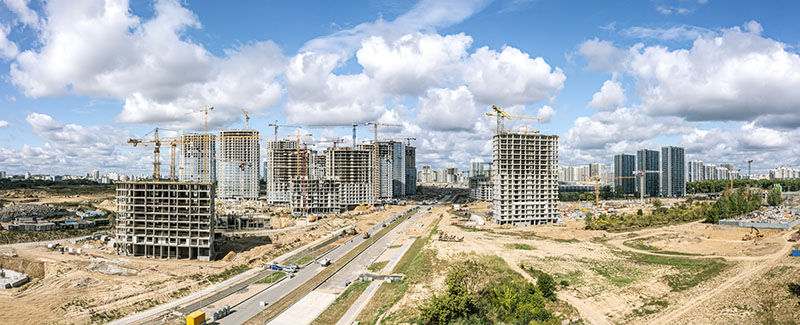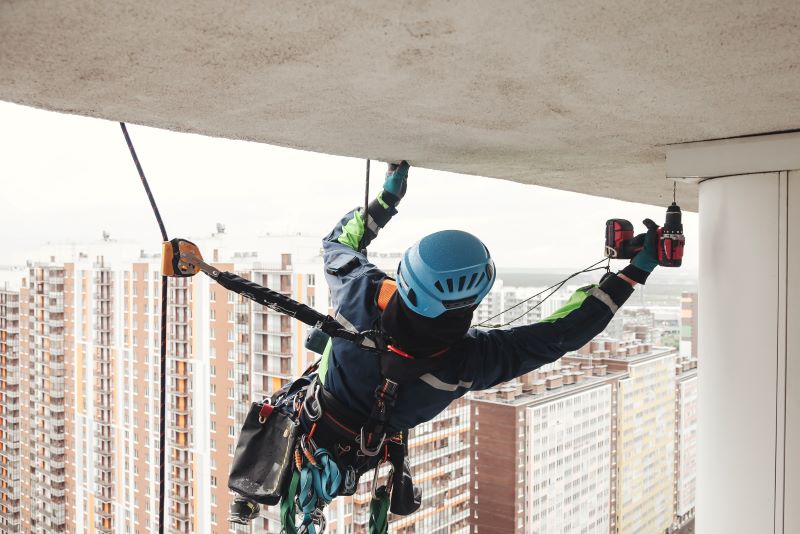High-rise building construction is a daring undertaking, demonstrating human dexterity. But they’re essential for efficient land use in areas with dense populations. With just a little horizontal footage, hundreds of people can be accommodated in the units spanning the vertical space. Moreover, high-rise buildings are often architectural icons, forming landmarks and defining the horizons of cities.
Asia boasts the largest number of skyscrapers, with China alone having 680 tall buildings. The U.S. follows with over 200 tall buildings.
However, high-rise construction comes with several challenges. There’s always the risk of accidents and falls, threatening the lives of the workers. For that reason, what you need is an effective risk management plan.
This guide offers practical tips to mitigate the hazards associated with high-rise construction. Read on!
1. Assess the risks
Construction of high-rise buildings presents several safety challenges, as outlined below:
- Falls from heights, which can result in broken limbs and death. In 2020, more than 20% of workplace deaths in the U.S. occurred in the construction industry, with falls accounting for about 33% of these deaths.
- Equipment failure, which jeopardizes worker safety
- Weather-related hazards like lightning or strong winds
- Exposure to hazardous materials
- Fire hazards from electrical works, welding operations, and presence of flammable materials
- Structural failures
Identifying the potential risks beforehand helps you know the mitigation measures to take. That said, evaluate the likely impact of these risks and create a safer workspace to ensure no one loses their life or gets injured while at the construction site.

2. Implement safety protocols
After identifying the risks, develop corresponding safety measures to curb them. Clearly outline the rules and procedures to follow to uphold safety at your construction site.
Start with the use of essential safety equipment at the site. Below are a few for consideration:
- Protective eyewear to safeguard the eyes from dust, debris, and shrapnel
- Safety harnesses for those working at heights to prevent and arrest falls
- Respirators to prevent the inhalation of fumes, harmful dust, and gasses
- Hard hats to prevent workers from sustaining head injuries from falling objects
- High-visibility clothing, especially in low-light or busy environments, to ensure workers are easily seen
- Steel-toed boots to protect the feet against heavy falling objects
- Safety nets to catch debris and provide an extra protection layer against falls
- Fire extinguishers strategically placed in high-risk areas
- Guardrails around open edges to prevent falls and unauthorized access
Proper maintenance of these tools and equipment is equally important to ensure the workers are always protected against accidents. Diligent scaffold maintenance is also critical. Workers use them to climb up and down the building; thus, they must be in sound condition.
You’d also want to train the construction workers in how to use this equipment. Not just once but regularly, ensuring they’re always up to date with the company’s safety protocols.
3. Leverage technology
Technology has infiltrated virtually all industries, including construction. Here are three tech-based ways to monitor and manage safety at high-rise construction sites:
- Drones: These devices can capture aerial views, providing a detailed perspective of the construction site. Aerial photos can reveal potential hazards that may be challenging to spot at ground level. Drones can also access hard-to-reach areas, saving workers from too-risky undertakings. The use of drones in the construction industry has been on a steep rise. The number of registered non-model UAVs in the U.S. was projected to reach 451,800 in 2022. Follow suit and use them at your construction site.
- Artificial Intelligence (AI): AI can be useful when analyzing large amounts of data from different sources. This way, you can identify imminent risk factors that aren’t so obvious. You can also use AI for predictive analysis. Forecasting potential construction site accident scenarios can allow you to create reasonable steps to alleviate them.
- Wearable tech: Wearable devices, like smart helmets and vests, can be used to monitor risks in real-time and alert workers. They can track parameters like a worker’s heart rate, location, and temperature and send instant alerts to supervisors in case of abnormal readings. Instant rescue response by the management can help save workers’ lives.
Technology is evidently helpful in maintaining safety at high-rise construction sites.
4. Adhere to laws and standards
Governments and institutions go to great heights to set rules to safeguard the health and safety of workers at construction sites. Most jurisdictions have some form of regulatory standards that construction managers have to abide by. Consult with local authorities and get the relevant documents. Set measures to ensure you’re fully compliant.
Non-compliance can lead to hefty fines, jail terms, or revocation of construction permits, resulting in unnecessary project delays. But besides these legal implications, you endanger the workers’ lives and risk tarnishing your company’s reputation. It may be difficult to win construction contracts in the future if your firm is charged for non-compliance.
It’s also beneficial to stay updated with the latest safety laws and standards. So, regularly train the workers to ensure they know critical safety protocols to follow.
Conclusion
While high-rise construction sites present numerous risks, there are essential strategies to mitigate them. By taking a proactive approach towards safety, it greatly enhances the protection of workers’ lives. Moreover, fostering a culture of safety is crucial, ensuring that everyone, from top management to on-site workers, holds safety as a top priority.

